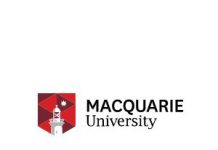Institutions implementing a lean strategy need to think carefully about who will support it. The University of Sheffield’s Rachel McAssey explains some of the elements that make up a successful lean team.
One of the key benefits of having a lean team is ensuring that the institution can make data-driven decisions, so it makes sense for any institution thinking about establishing a lean team to get the data from the sector and elsewhere about what works well and apply this to their own institutional culture and circumstance.
In my role as chair of Lean HE’s European continental division, I get to speak to a lot of lean practitioners and I am also co-writing a UCISA guide with Steve Yorkstone on Establishing Process Improvement Capability in an HE Environment (due to be published November 2016). But from our research for this guide and conversations with colleagues, I have discovered that there is no consensus on best practice in setting up a lean team in a university.
Despite this lack of consensus, our research has still identified some common elements in university lean teams, which I will share in this article.
How many people make a lean team?
Two or more people – sector average is 3.4 full time equivalent, but varies between one and 12 – although the larger teams may not be entirely devoted to lean activities.
There are a number of people who are currently in a team of one, these individuals who are undertaking lean work in higher education (HE) should not be dismissed – they are most definitely contributing to sector good practice.
How to recruit
There are a number of ways that universities have recruited when setting up a lean team. These include: using the expertise of an academic member of staff to create capacity; external recruitment; internal appointment; internal training to create capacity leading to internal appointments. These options are not mutually exclusive.
Activities the lean team are involved with:
Generally lean teams in the sector:
- run workshops using lean thinking for business process improvement;
- run lean projects;
- deliver lean training within the institution – and sometimes externally;
- support IT development activity;
- support the institutional project management office;
- provide general support for institutional business change;
- help to grow change management capacity within the university;
- staff coaching activities.
Skills and experience
I am also an avid reader of sector job descriptions, so I’ve included some of my findings from this area of research. Reading through recent sector job descriptions the most common requirements are:
- Experience of using lean, preferably within HE
- Problem solving skills
- Facilitation skills
- Data analysis
- Customer focused
- Lean qualifications
- Good interpersonal skills
- Project management skills
- Business analysis experience
- Pragmatism
- Innovation
- Sector knowledge
Questions to ask when setting up a lean team
- What is the purpose of the team? i.e. what activities will they undertake
- Do we have any current internal capability?
- What is our institutional culture and do we want the team to embrace or disrupt the culture?
- What is the nature of the funding? (fixed term / open-ended contracts/secondments – full or partial)
- What are the implications for governance?
- Is it an individual facilitation or co-facilitation model
The new ISO18404 is a controversial move to regulate the individual and organisation competencies for lean and six sigma. It may be worth any organisation creating a lean team in the future taking a look at these competencies as a guide for recruitment, even if they choose not to opt for certification.
Rachel McAssey is the author of the AUA’s Good Practice Guide An Introduction to Business Process Improvement for HE Administrators. Please contact Kimberley Mellor for details of how to order a copy.








